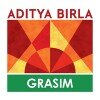Filter interviews by
Rudraksh Detergent & Chemical Interview Questions, Process, and Tips
Rudraksh Detergent & Chemical Interview Experiences
1 interview found
I applied via Referral and was interviewed in May 2022. There were 2 interview rounds.

(9 Questions)
- Q1. What is the minimum thickness of slab
- Ans.
The minimum thickness of a slab depends on various factors such as the load it will bear and the type of material used.
The minimum thickness of a slab is typically determined by structural engineers based on the expected load it will bear.
For residential buildings, the minimum slab thickness is usually around 4 inches (10 cm).
For commercial or industrial buildings, the minimum slab thickness can range from 6 to 8 inche...
- Q2. What is the minimum angle of staircase
- Ans.
The minimum angle of a staircase depends on the building codes and regulations of the specific jurisdiction.
The minimum angle of a staircase is typically determined by building codes and regulations.
In general, a minimum angle of 30 degrees is often required for residential staircases.
For commercial or public buildings, the minimum angle may be higher, such as 35 or 40 degrees.
The purpose of specifying a minimum angle ...
- Q3. What is the minimum cover in footing
- Ans.
The minimum cover in footing refers to the minimum depth of soil or concrete above the reinforcement in a foundation.
The minimum cover is determined based on factors such as the type of soil, load-bearing capacity, and environmental conditions.
It is important to provide sufficient cover to protect the reinforcement from corrosion and ensure the structural integrity of the footing.
The minimum cover requirements may vary...
- Q4. What is the height of Crank bar
- Ans.
The height of a crank bar varies depending on its specific application and design.
The height of a crank bar can be determined by referring to the engineering drawings or specifications of the particular project or equipment.
In general, the height of a crank bar is measured from the base to the highest point of the bar.
The height may also depend on the intended use of the crank bar, such as in machinery or construction.
...
- Q5. What is the steel density
- Ans.
The steel density is the measure of how much mass is contained in a given volume of steel.
Steel density is typically measured in kilograms per cubic meter (kg/m^3).
The density of steel can vary depending on the specific type and composition of the steel.
For example, the density of carbon steel is around 7850 kg/m^3.
Stainless steel, on the other hand, has a density of about 8000 kg/m^3.
The density of steel is an importa...
- Q6. What is ratio of M20 concrete
- Ans.
The ratio of M20 concrete is 1:1.5:3.
The ratio of M20 concrete refers to the proportion of cement, sand, and aggregate used in the mix.
For M20 concrete, the ratio is 1 part cement, 1.5 parts sand, and 3 parts aggregate.
This ratio is commonly used for general construction purposes.
- Q7. What is the standard height of cilling
- Ans.
The standard height of a ceiling varies depending on the type of building and its purpose.
The standard height for residential ceilings is typically around 8 to 9 feet.
Commercial buildings often have higher ceilings, ranging from 10 to 12 feet or more.
In industrial settings, ceilings can be even higher to accommodate large machinery or equipment.
Certain specialized buildings like theaters or auditoriums may have much hi...
- Q8. Minimum bar in square Column
- Ans.
The minimum bar in a square column refers to the minimum amount of reinforcement required for the column.
The minimum bar in a square column is determined by the size and design of the column.
It is typically specified in terms of the diameter and spacing of the reinforcement bars.
The purpose of the minimum bar is to provide adequate strength and stability to the column.
The minimum bar requirements may vary depending on ...
- Q9. What is development length
- Ans.
Development length is the minimum length of reinforcement required to transfer the stress between the steel and concrete.
Development length is determined based on the type of reinforcement and the bond strength between steel and concrete.
It is necessary to ensure that the reinforcement bars are properly embedded in the concrete to provide the required strength.
Development length is influenced by factors such as bar dia...
Interview Preparation Tips
Top Rudraksh Detergent & Chemical Civil Supervisor Interview Questions and Answers
Civil Supervisor Interview Questions asked at other Companies
Top trending discussions






Interview questions from similar companies

I applied via Job Fair and was interviewed before Jun 2021. There were 3 interview rounds.

(1 Question)
- Q1. HAC Classification, Basics of Safety
(1 Question)
- Q1. Incident investigation, Basics of Safety, Leadership skills
Interview Preparation Tips

I applied via Campus Placement and was interviewed in Dec 2016. There were 2 interview rounds.
Interview Preparation Tips
Experience: HR was really friendly and discussed resume in detail.
Round: Technical Interview
Experience: Had more discussion on technical terms on resume.
Round: Technical Interview
Experience: Asked questions on Programming and questions related to course work mentioned in the resume. The interview was completely candidate driven.
College Name: IIT Madras

I applied via Campus Placement and was interviewed in Dec 2016. There were 2 interview rounds.
Interview Preparation Tips
Experience: HR was really friendly and asked about projects in the resume.
Round: Technical Interview
Experience: Interviewer asked questions related to programming and algorithms.
Round: Technical Interview
Experience: Interviewer asked all technical details inside the resume. This round was more technical. More emphasis was on problem solving skills.
College Name: IIT Madras

I appeared for an interview in Sep 2016.
Interview Questionnaire
2 Questions
- Q1. Tell about your project
- Ans.
Developed a mobile app for tracking daily water intake
Designed user-friendly interface for easy input of water consumption
Implemented reminders to encourage regular hydration
Integrated with health tracking apps to provide comprehensive health data
Received positive feedback from beta testers for improved hydration habits
- Q2. Tell about your por
- Ans.
I have experience in various internships related to my field of study.
Interned at XYZ Company, assisting with data analysis and research projects.
Completed a summer internship at ABC Hospital, shadowing doctors and nurses.
Worked as an intern at DEF Organization, helping with event planning and coordination.
Participated in a research internship at GHI University, conducting experiments and analyzing data.
Interview Preparation Tips
Duration: 20 minutes
College Name: BITS Pilani

I applied via Campus Placement and was interviewed in Dec 2016. There were 4 interview rounds.
Interview Preparation Tips
Experience: There were totally 8 sections to the test. But they could be broadly put under 4 categories. Firstly all questions were compulsory to attempt and there was no negative marking. Aptitude: Basic quantitative math questions were asked. There was one simple programming question where one could code in C/Java in your local IDE and upload the code file. It was a DO or DIE question, either you get the question and proceed to the next questions of the test or the test gets stopped if the code is not successfully compiled within 5 attempts. This programming question, as was told was an important criteria to filter out candidates for the next round. There was a descriptive question asking about a recent team project done.
Tips: Achievements in sports and other extra curricular activities are valued. Mention them in the resume, if applicable.
Duration: 1 hour 30 minutes
Round: Technical Interview
Experience: In this round, they look for the candidate's experience in coding in whatever language mentioned in the resume - I was asked to write some simple codes in c. I was also asked to explain some projects from the resume.
Tips: basic knowledge of data structures, resume preparation
Round: Technical + HR Interview
Experience: In this round, the questions were mostly based on the resume and the projects done. Also, HR questions like What do you know about Schlumberger, How do you perform in a team, What makes you unique from the other candidates etc. were asked. They also ask if you have any questions from your side - Better to ask questions if you have one or if you can't think upon any specific question, ask them a doubt from whatever they have said(usually they say a lot about their company and principles before they ask you for questions)
Tips: Prepare for a HR interview separately, resume preparation
College Name: IIT Madras

I applied via Naukri.com and was interviewed before May 2020. There were 5 interview rounds.
Interview Questionnaire
1 Question
- Q1. Market segments, Driving policies and 7P's
Interview Preparation Tips

I applied via Recruitment Consultant and was interviewed before May 2020. There were 4 interview rounds.
Interview Questionnaire
1 Question
- Q1. Subject wise, experience wise, skills wise, personal development wise
Interview Preparation Tips

I applied via Recruitment Consultant and was interviewed in Jun 2020. There were 3 interview rounds.
Interview Questionnaire
1 Question
- Q1. Questions based on your past experience and job profile.
Interview Preparation Tips

I applied via Naukri.com and was interviewed before Apr 2021. There was 1 interview round.
(2 Questions)
- Q1. Conflict management questions
- Q2. Team work and attitude
Interview Preparation Tips
Rudraksh Detergent & Chemical Interview FAQs
Tell us how to improve this page.
Interview Questions for Popular Designations
Rudraksh Detergent & Chemical Interview Process
based on 1 interview
Interview experience
Interview Questions from Similar Companies
Rudraksh Detergent & Chemical Reviews and Ratings
based on 17 reviews
Rating in categories
|
Commercial Assistant
4
salaries
| ₹1.4 L/yr - ₹2.2 L/yr |
|
Shift Production Officer
4
salaries
| ₹3 L/yr - ₹4.3 L/yr |
|
Assistant Manager
3
salaries
| ₹5.5 L/yr - ₹5.5 L/yr |
|
Assistant Manager Maintenance
3
salaries
| ₹8.4 L/yr - ₹13 L/yr |
|
Junior Production Officer
3
salaries
| ₹2.7 L/yr - ₹2.7 L/yr |

Asian Paints

Berger Paints

Grasim Industries

Kansai Nerolac Paints
- Home >
- Interviews >
- Rudraksh Detergent & Chemical Interview Questions








